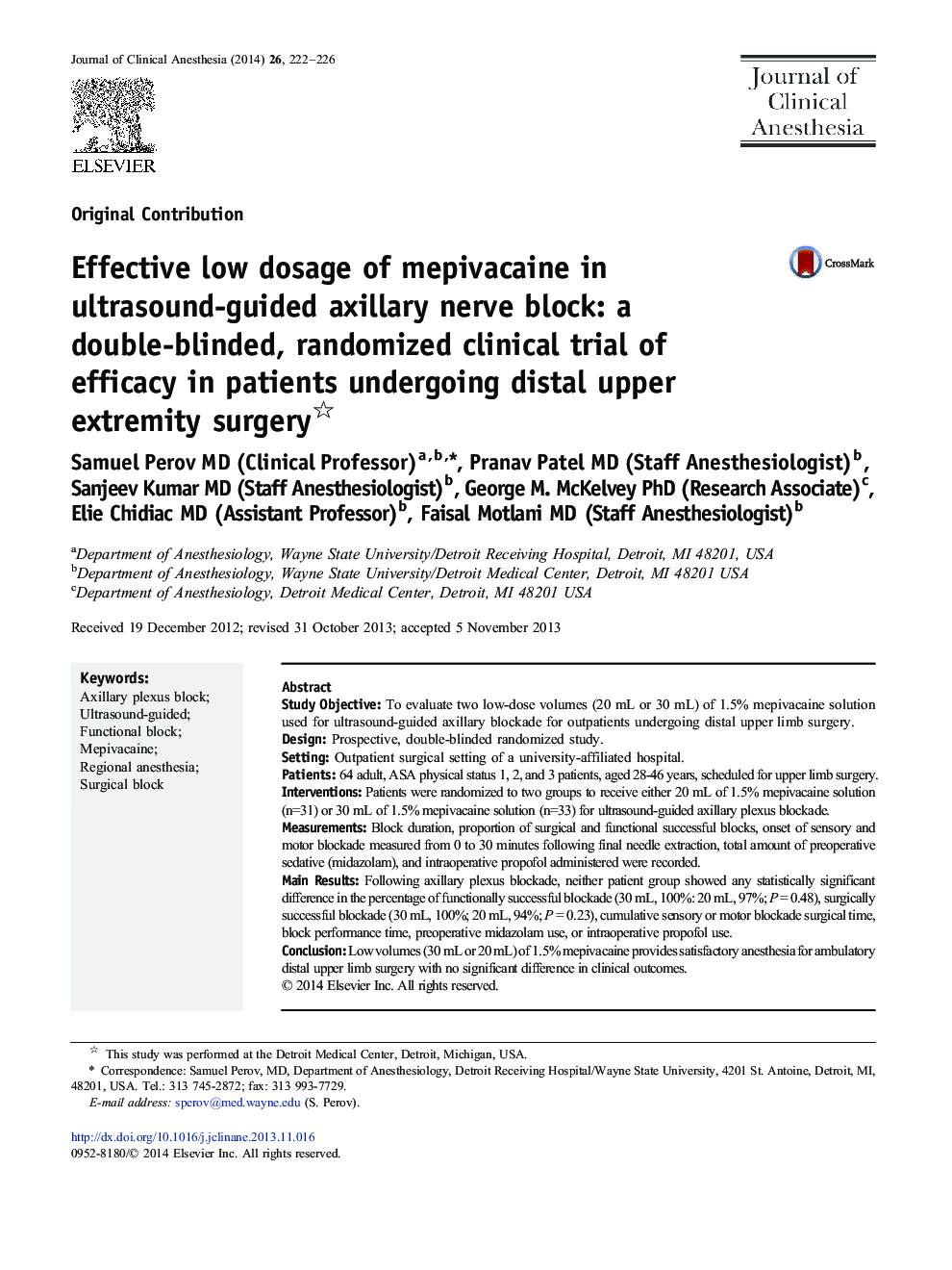| Article ID | Journal | Published Year | Pages | File Type |
|---|---|---|---|---|
| 2762469 | Journal of Clinical Anesthesia | 2014 | 5 Pages |
Study ObjectiveTo evaluate two low-dose volumes (20 mL or 30 mL) of 1.5% mepivacaine solution used for ultrasound-guided axillary blockade for outpatients undergoing distal upper limb surgery.DesignProspective, double-blinded randomized study.SettingOutpatient surgical setting of a university-affiliated hospital.Patients64 adult, ASA physical status 1, 2, and 3 patients, aged 28-46 years, scheduled for upper limb surgery.InterventionsPatients were randomized to two groups to receive either 20 mL of 1.5% mepivacaine solution (n=31) or 30 mL of 1.5% mepivacaine solution (n=33) for ultrasound-guided axillary plexus blockade.MeasurementsBlock duration, proportion of surgical and functional successful blocks, onset of sensory and motor blockade measured from 0 to 30 minutes following final needle extraction, total amount of preoperative sedative (midazolam), and intraoperative propofol administered were recorded.Main ResultsFollowing axillary plexus blockade, neither patient group showed any statistically significant difference in the percentage of functionally successful blockade (30 mL, 100%: 20 mL, 97%; P = 0.48), surgically successful blockade (30 mL, 100%; 20 mL, 94%; P = 0.23), cumulative sensory or motor blockade surgical time, block performance time, preoperative midazolam use, or intraoperative propofol use.ConclusionLow volumes (30 mL or 20 mL) of 1.5% mepivacaine provides satisfactory anesthesia for ambulatory distal upper limb surgery with no significant difference in clinical outcomes.
